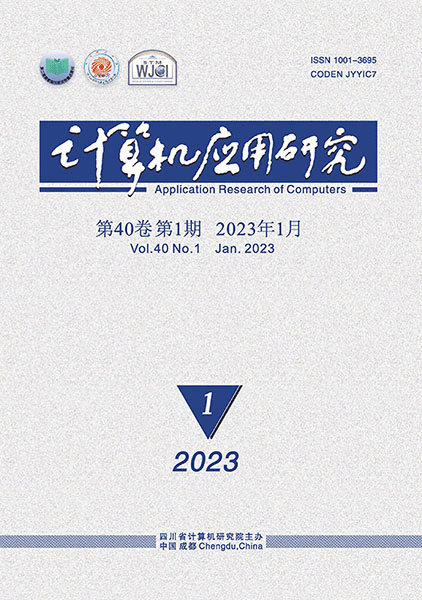Intermediate language representation for vulnerability detection
Intermediate language representation for vulnerability detection
1. School of Computer Science, Shenyang Aerospace University, Shenyang 110136, China
2. National Computer Network Emergency Response Technical Team/Coordination Center of China, Beijing 100029, China
3. Institute for Network Sciences & Cyberspace, Tsinghua University, Beijing 100084, China

摘要
The intermediate language adopted in existing Web vulnerability detection methods is designed for a specific programming language. However, when abstracting a vulnerability from the source code of multiple programming languages, a unified intermediate language cannot represent the same type of vulnerability in multiple languages, which increases the difficulty of subsequent vulnerability analysis. To deal with this problem, this paper proposed an intermediate language based on taint analysis to realize the unified abstract representation of the same type of vulnerability information in multiple programming languages. In the design process of the intermediate language, it firstly abstracted the process of vulnerability as a triple representation, and the code elements related to the triple were abstracted as the keywords of the intermediate language. Secondly, it designed the syntax of the intermediate language according to the semantic relationship between the triples. Thirdly, it utilized the taint analysis method to trace the execution path of the taint source when escaping, and the intermediate language representation could be obtained by escaping the source code in the path. Finally, it applied the intermediate language to the vulnerability detection model. The experimental results show that compared with the other intermediate languages' abstract representation of vulnerability information in programming languages, the proposed intermediate language is more universal and more effective for vulnerability detection.
基金项目
航空科学基金资助项目(2019ZE054009)
辽宁省自然科学基金资助项目(2020-MS-239,2019-ZD-0234)
辽宁省教育厅科技基金资助项目(LJKZ0210,JYT19053,JYT19040)
出版信息
DOI: 10.19734/j.issn.1001-3695.2023.03.0119
出版期卷: 《计算机应用研究》 Printed Article, 2023年第40卷 第11期
所属栏目: Software Technology Research
出版页码: 3377-3381,3393
文章编号: 1001-3695(2023)11-027-3377-05
发布历史
引用本文
张国栋, 刘子龙, 靳卓, 等. 用于漏洞检测的中间语言表示方法 [J]. 计算机应用研究, 2023, 40 (11): 3377-3381,3393. (Zhang Guodong, Liu Zilong, Jin Zhuo, et al. Intermediate language representation for vulnerability detection [J]. Application Research of Computers, 2023, 40 (11): 3377-3381,3393. )
关于期刊

- 计算机应用研究 月刊
- Application Research of Computers
-
刊号
ISSN 1001-3695
CN 51-1196/TP
《计算机应用研究》创刊于1984年,是由四川省科技厅所属四川省计算机研究院主办的计算技术类学术刊物。
《计算机应用研究》瞄准本学科领域迫切需要的前沿技术,及时反映国内外计算机应用研究的主流技术、热点技术及最新发展趋势。主要刊载内容包括本学科领域高水平的学术论文、本学科最新科研成果和重大应用成果。栏目内容涉及计算机学科新理论、计算机基础理论、算法理论研究、算法设计与分析、区块链技术、系统软件与软件工程技术、模式识别与人工智能、体系结构、先进计算、并行处理、数据库技术、计算机网络与通信技术、信息安全技术、计算机图像图形学及其最新热点应用技术。
《计算机应用研究》拥有众多高层次读者、作者,读者对象主要为从事计算机学科领域高、中级研究人员及工程技术人员,各高等院校计算机专业及相关专业的师生。多年来《计算机应用研究》的总被引频次及Web下载率一直名列本学科同类学术刊物前茅,所刊发的学术论文以其新颖性、学术性、前瞻性、导向性、实用性而备受广大读者的喜爱。
收录和评价
- 第二届国家期刊奖百种重点期刊
- 中国期刊方阵双效期刊
- 全国中文核心期刊(北大2023年版)
- 中国科技核心期刊
- 中国科学引文数据库(CSCD)来源期刊
- RCCSE中国核心学术期刊
- 中国计算机学会会刊
- 2020—2022年科技期刊世界影响力指数(WJCI)报告收录期刊
- 中国科技期刊精品数据库全文来源期刊
- 中国学术期刊综合评价数据库来源期刊
- 《中国期刊网》《中国学术期刊(光盘版)》来源期刊
- 2017—2019年中国国际影响力优秀学术期刊(自然科学与工程技术)
- 中国精品科技期刊顶尖学术论文(F5000)项目来源期刊
- 《中国工程技术电子信息网》《电子科技文献数据库》来源期刊
- 英国《科学文摘》(INSPEC)来源期刊
- 《日本科学技术振兴机构数据库》(JST)来源期刊
- 俄罗斯《文摘杂志》(AJ, VINITI)来源期刊
- 美国《艾博思科学术数据库》(EBSCO)全文来源期刊
- 美国《剑桥科学文摘(自然科学)》(CSA(NS))核心期刊
- 波兰《哥白尼索引》(IC)来源期刊
- 美国《乌利希期刊指南(网络版)》(Ulrichsweb)收录期刊





